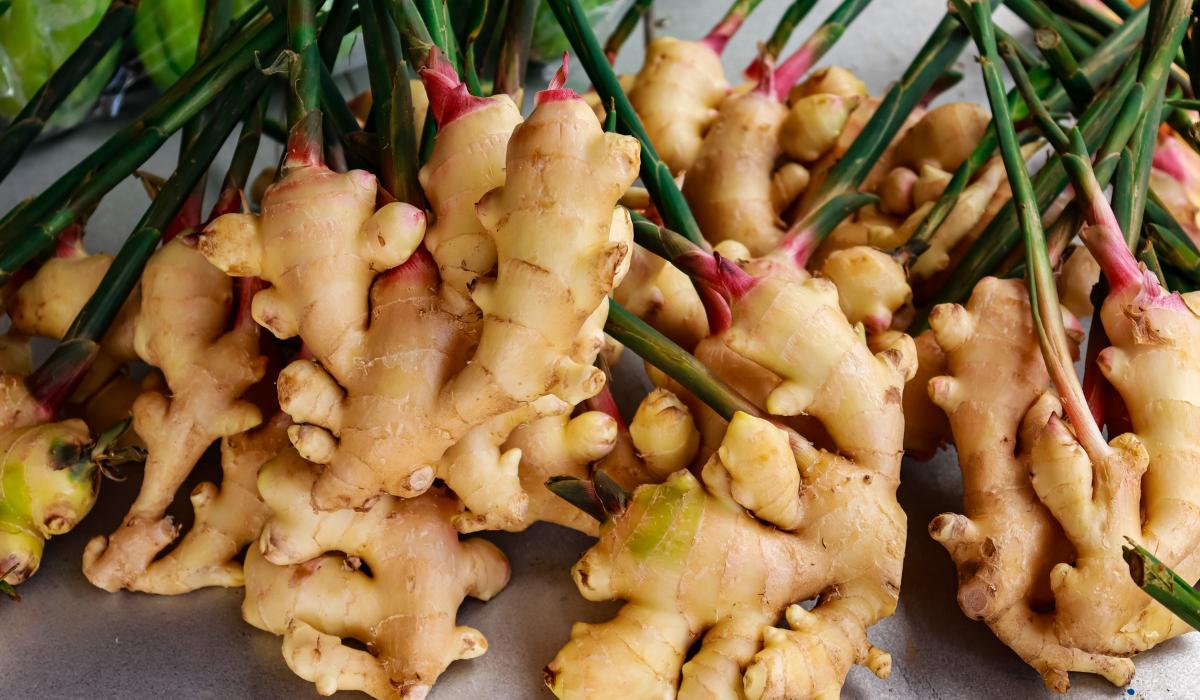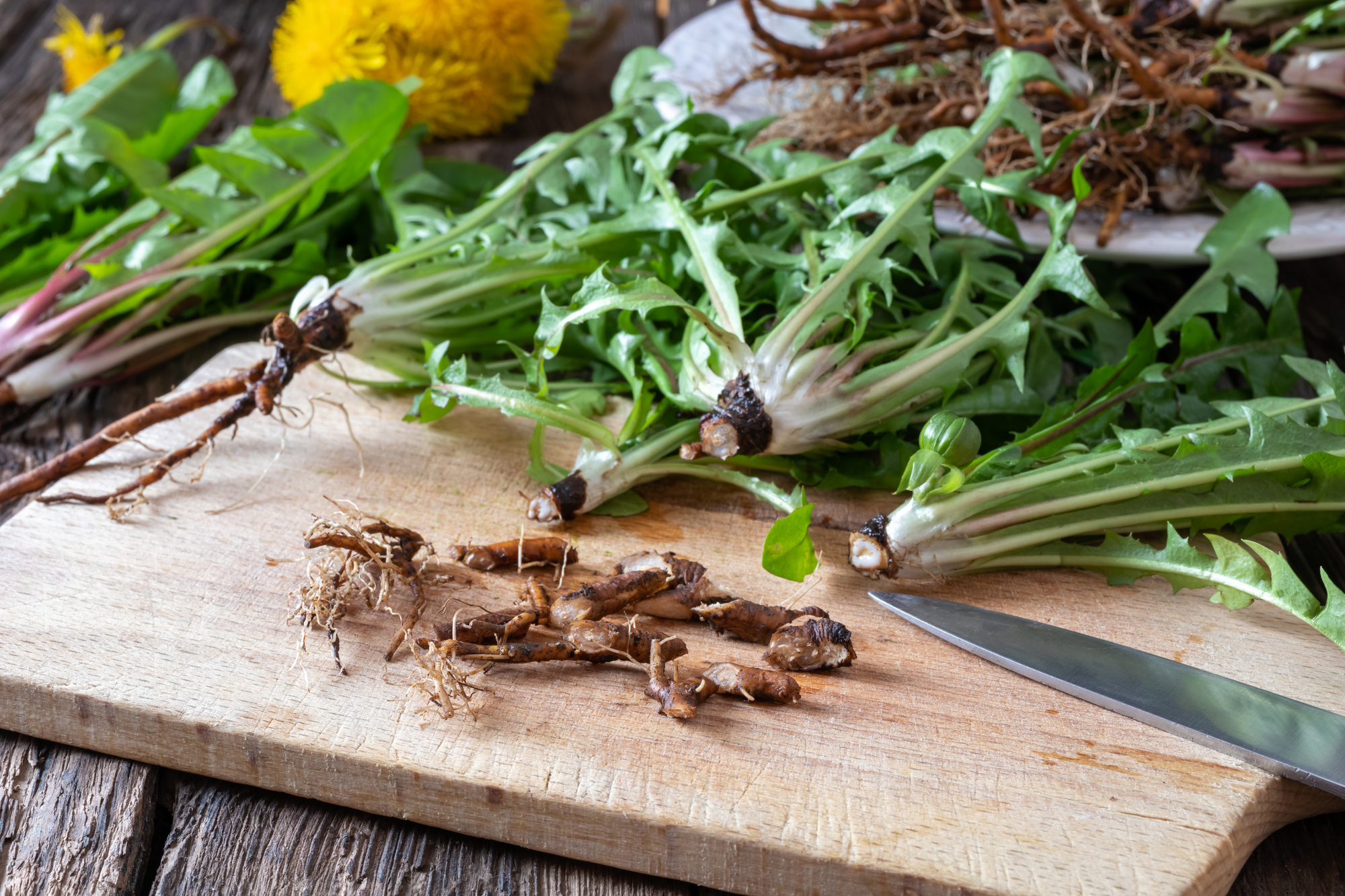4 Gut-Healing Herbs You Can Grow at Home
Tired of bloating, indigestion, or constant gut discomfort?
You’re not alone. Millions of Canadians are quietly struggling with IBS, acid reflux, food sensitivities, or just feeling “off” after every meal.
Here’s the truth: Your gut is trying to speak to you—and sometimes, modern solutions only silence the symptoms, not the root cause.
But what if your healing didn’t come in a bottle… but grew in your garden?
In this guide, we’ll show you how to grow four powerhouse herbs for gut repair:
Ginger, Turmeric, Dandelion Root, and Schisandra. These aren’t just ingredients—they’re medicine that’s been trusted for centuries. And now, they can thrive on your patio or kitchen windowsill.

🌿 1. Ginger – The Anti-Inflammatory Root That Starts It All
Why Your Gut Loves It:
Ginger has been used in Eastern and Western medicine for centuries. It reduces gut inflammation, eases nausea, and boosts digestive enzymes—making it perfect for anyone dealing with indigestion or sluggish digestion.
How to Grow Ginger at Home in Canada:
-
Buy fresh organic ginger root with “eyes” (growth buds) at your local store or garden centre.
-
Soak it overnight in warm water.
-
Plant in a wide, shallow container with loose, organic potting soil. Keep the buds facing upward.
-
Water regularly—but don’t let it sit in soggy soil.
-
Place in a warm, sunny area indoors, or outside in the summer.
-
Harvest in 8–10 months by digging gently and snapping off sections.
✅ Tip: Use fresh ginger slices in tea or smoothies—or grate into soups and stir-fry for an everyday gut boost.

Ginger has been used in Eastern and Western medicine for centuries. It reduces gut inflammation, eases nausea, and boosts digestive enzymes—making it perfect for anyone dealing with indigestion or sluggish digestion.
🌿 2. Turmeric – Nature’s Gut Healer and Protector
Why Your Gut Loves It:
Turmeric contains curcumin, a powerful anti-inflammatory that supports gut lining health, reduces bloating, and even helps in leaky gut repair. It also supports liver detox—a key partner to digestive health.
How to Grow Turmeric at Home:
-
Like ginger, turmeric grows from rhizomes (not seeds).
-
Choose organic turmeric root with healthy nodes.
-
Plant in deep containers with well-draining, fertile soil.
-
Keep in warm temperatures (ideal indoors or greenhouses in Canada).
-
Requires 8–10 months to mature—harvest once leaves start yellowing.
✅ Tip: Blend turmeric into golden milk with black pepper (which boosts curcumin absorption), or dehydrate and powder your own homemade turmeric capsules!

Turmeric contains curcumin, a powerful anti-inflammatory that supports gut lining health, reduces bloating, and even helps in leaky gut repair. It also supports liver detox—a key partner to digestive health.
🌿 3. Dandelion Root – Detox Power for the Liver and Gut
Why Your Gut Loves It:
Often overlooked as a weed, dandelion root is a powerful herb for detoxifying the liver, stimulating bile production, and gently cleaning the digestive tract. It’s a friend to sluggish systems and ideal for anyone dealing with constipation, fatigue, or skin issues tied to gut health.
How to Grow Dandelion (Organically) at Home:
-
You can allow wild dandelion to grow in untreated areas—or start from heirloom dandelion seeds in planters.
-
Needs full sun and thrives in most soils, especially loose, sandy types.
-
Harvest roots in fall, when energy has returned underground.
-
Scrub, slice, and dry for tea—or roast for a caffeine-free “coffee” alternative.
✅ Tip: Dandelion greens are also edible—rich in prebiotics and excellent for salads!

Often overlooked as a weed, dandelion root is a friend to sluggish systems and ideal for anyone dealing with constipation, fatigue, or skin issues tied to gut health.
🌿 4. Schisandra – The Adaptogen for Total Gut Resilience
Why Your Gut Loves It:
Schisandra is a rare, powerful adaptogenic berry used in Traditional Chinese Medicine. It strengthens the gut, clears excess mucus, reduces gut-brain stress, and supports adrenal balance—ideal if your digestive issues are linked to anxiety or burnout.
How to Grow Schisandra in Canada:
-
Best grown from dormant bare-root vines or seeds from reputable nurseries.
-
Requires a trellis or arbor for climbing.
-
Prefers part-shade, slightly acidic soil, and steady moisture.
-
Female vines need a male pollinator to bear fruit—plant at least two.
-
Berries appear in year 3–4. Harvest when bright red, dry, and use for tea or tincture.
✅ Tip: Dried Schisandra berries can be steeped into tea or added to herbal blends. Their taste is unique—sweet, sour, salty, bitter, and pungent all at once!

Schisandra strengthens the gut, clears excess mucus, reduces gut-brain stress, and supports adrenal balance—ideal if your digestive issues are linked to anxiety or burnout.
💡 Why Growing Your Own Healing Herbs Makes Sense (Especially in Canada)
Canadians are increasingly turning to natural health and homegrown food—and for good reason:
-
🌿 Freshness: Store-bought ginger or turmeric often loses potency. Homegrown means max nutrition.
-
💰 Cost-saving: Herbal teas, powders, and supplements can be expensive—your backyard or balcony is the ultimate pharmacy.
-
🧠 Empowerment: There’s something deeply healing about growing your own medicine. It reconnects you with nature and with your body’s needs.
-
🌎 Sustainability: No plastic bottles, no carbon-heavy imports—just sunlight, soil, and care.
🪴 Simple Indoor Herb Garden Setup for Beginners
If you live in a condo or small apartment, don’t worry—you can still start your gut-healing garden!
Here’s what you need:
| Item | Purpose |
|---|---|
| 4–6 Medium-sized pots (with drainage) | For growing ginger, turmeric, and dandelion |
| Organic potting soil | Loose, well-draining, rich in compost |
| Sunny windowsill or grow lights | Most herbs need 6–8 hours of light |
| Spray bottle | For gentle moisture control |
| Labels or chalk signs | To identify plants easily |
👉 Want a ready-to-use growing kit? Check out [DH Garden Centre’s Herb Starter Packs] – coming soon!
✨ Healing Starts With One Pot
You don’t need acres of land or years of gardening experience.
You just need one pot, one plant, and the intention to feel better.
Start with ginger. Add turmeric. Let dandelion root spread. Train a schisandra vine.
Over time, your little garden becomes a living medicine cabinet—one that supports your gut, calms your system, and helps you heal from the inside out.
📌 Final Words: Your Gut Deserves This
Don’t ignore the signs: bloating, fatigue, skin breakouts, emotional stress. Your gut is at the center of your well-being—and nature has already written the remedy.
These four herbs are gentle, powerful, and waiting to be planted by someone ready to heal.
Why not you?
🌱 Grow healing. Grow hope. Grow your gut garden today.

